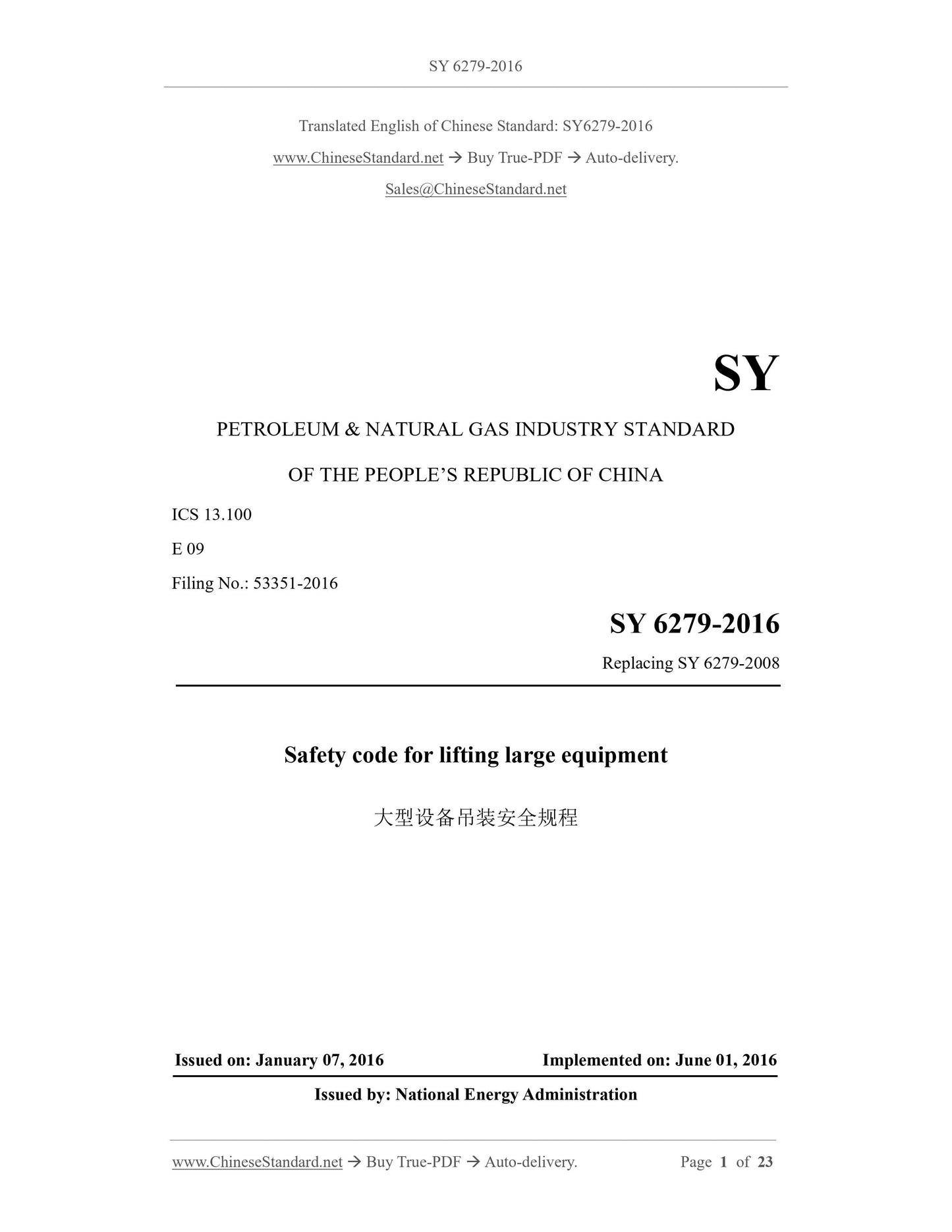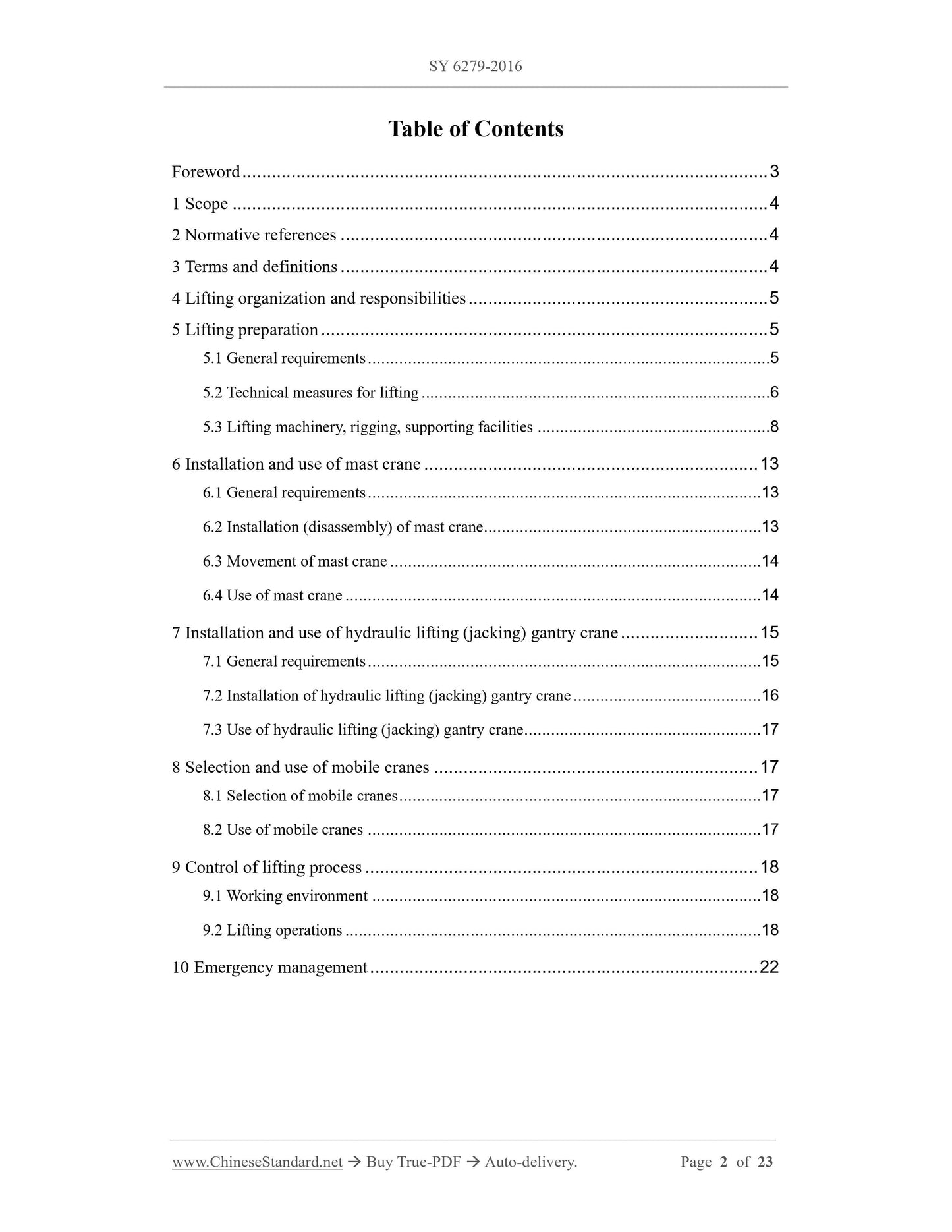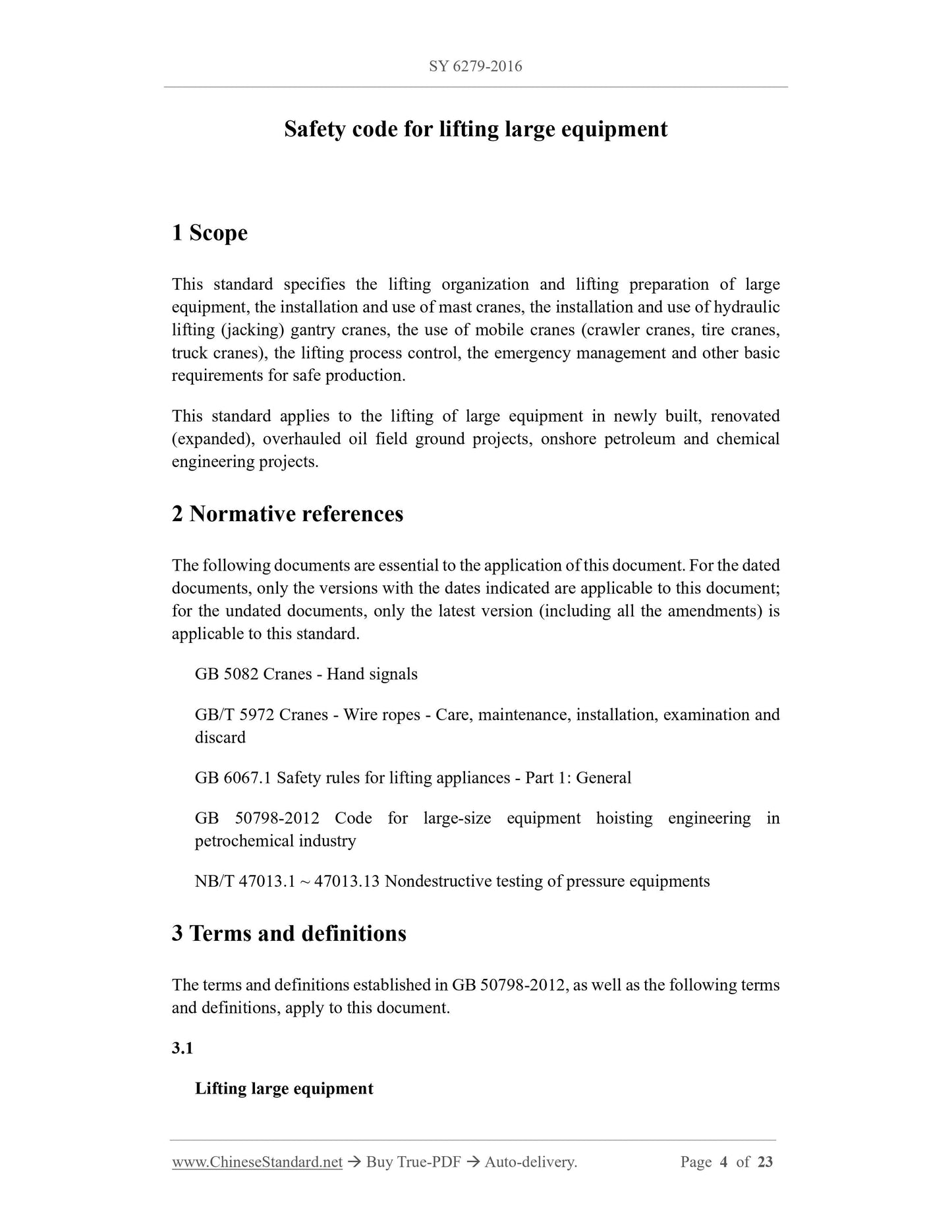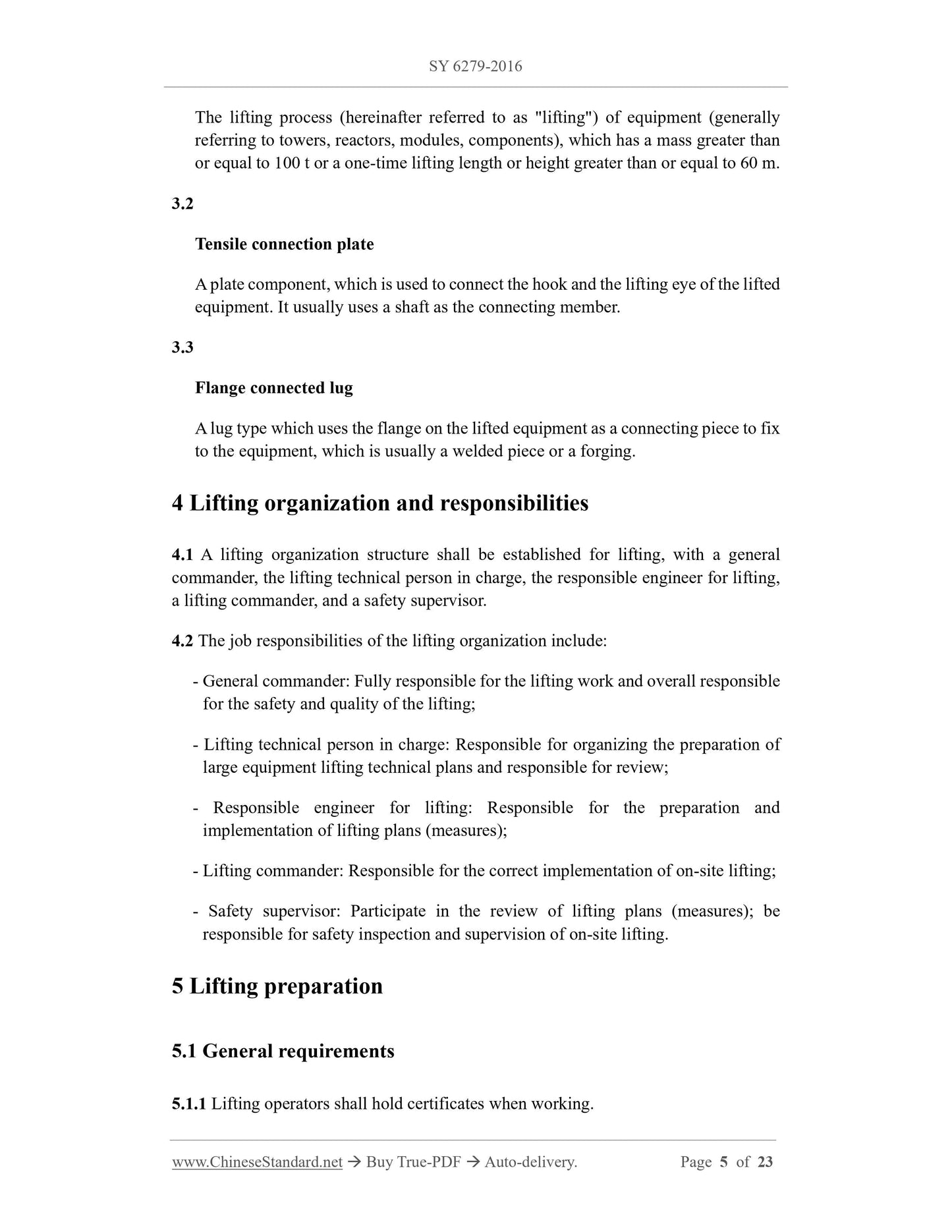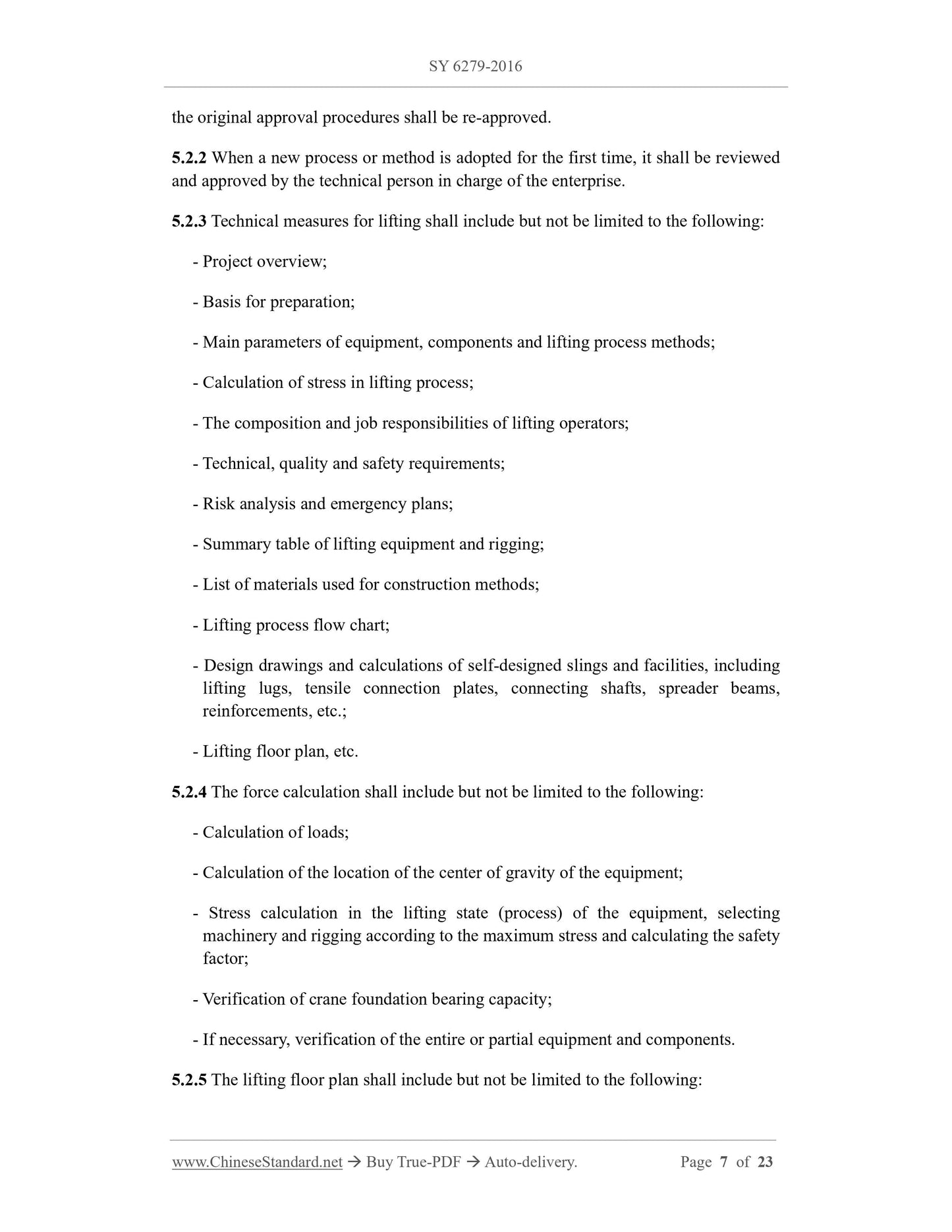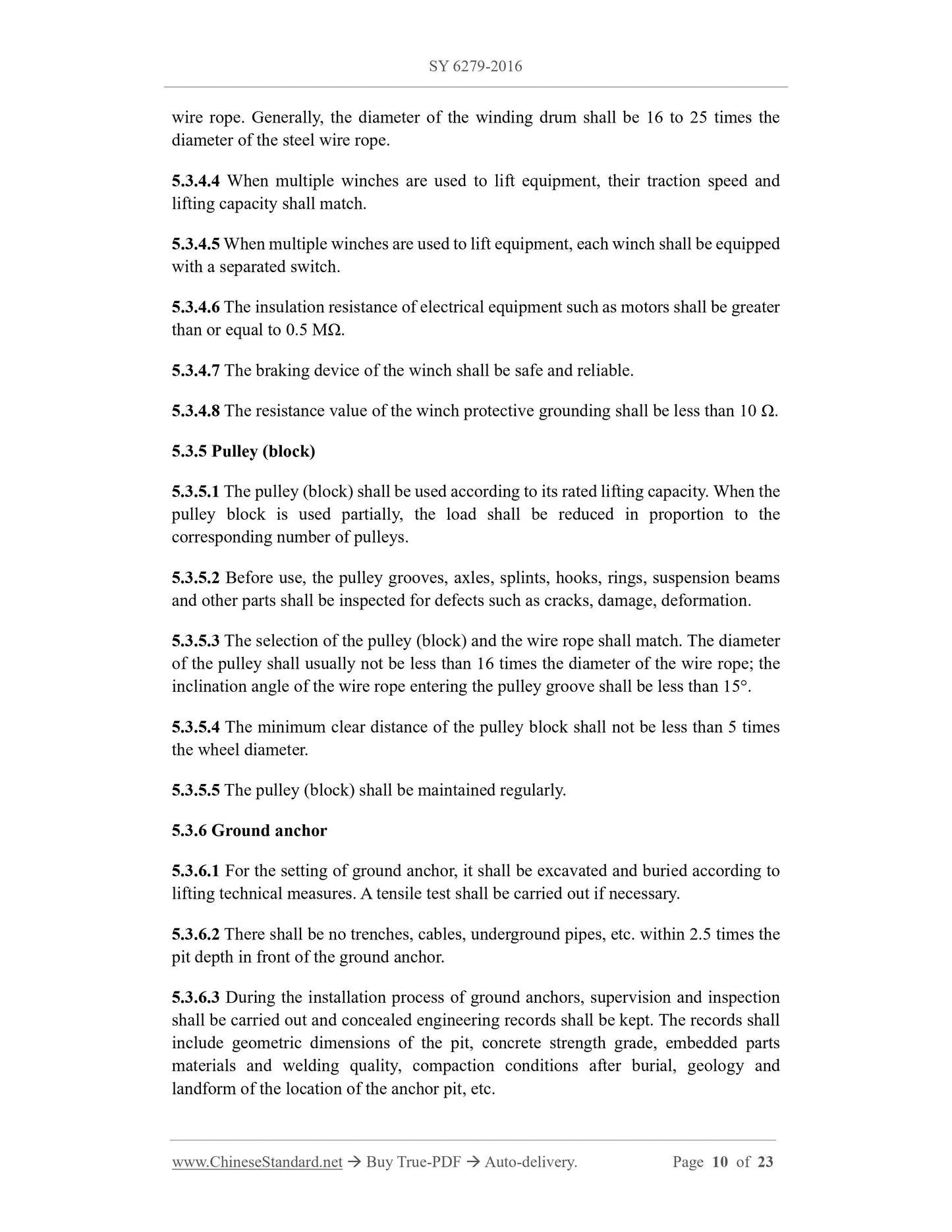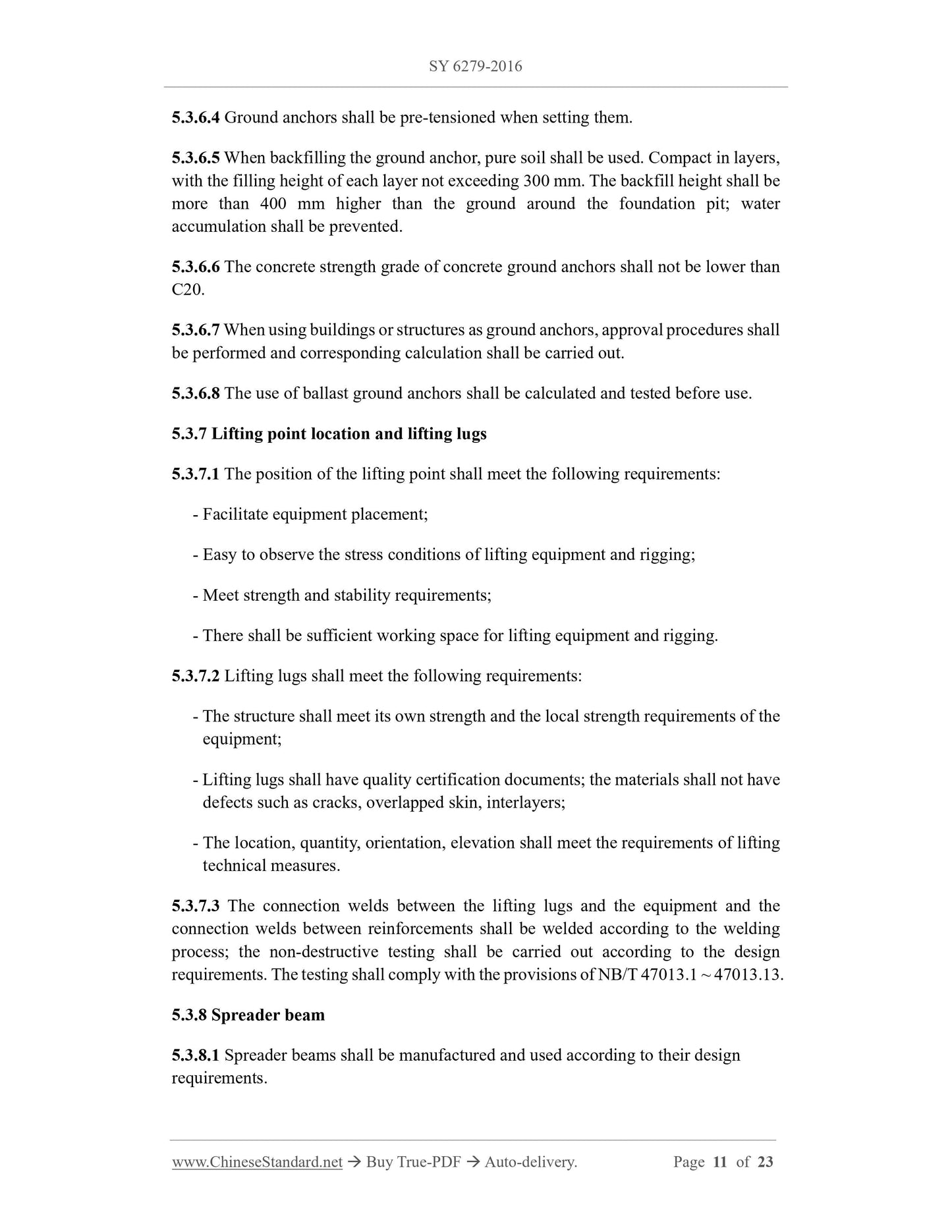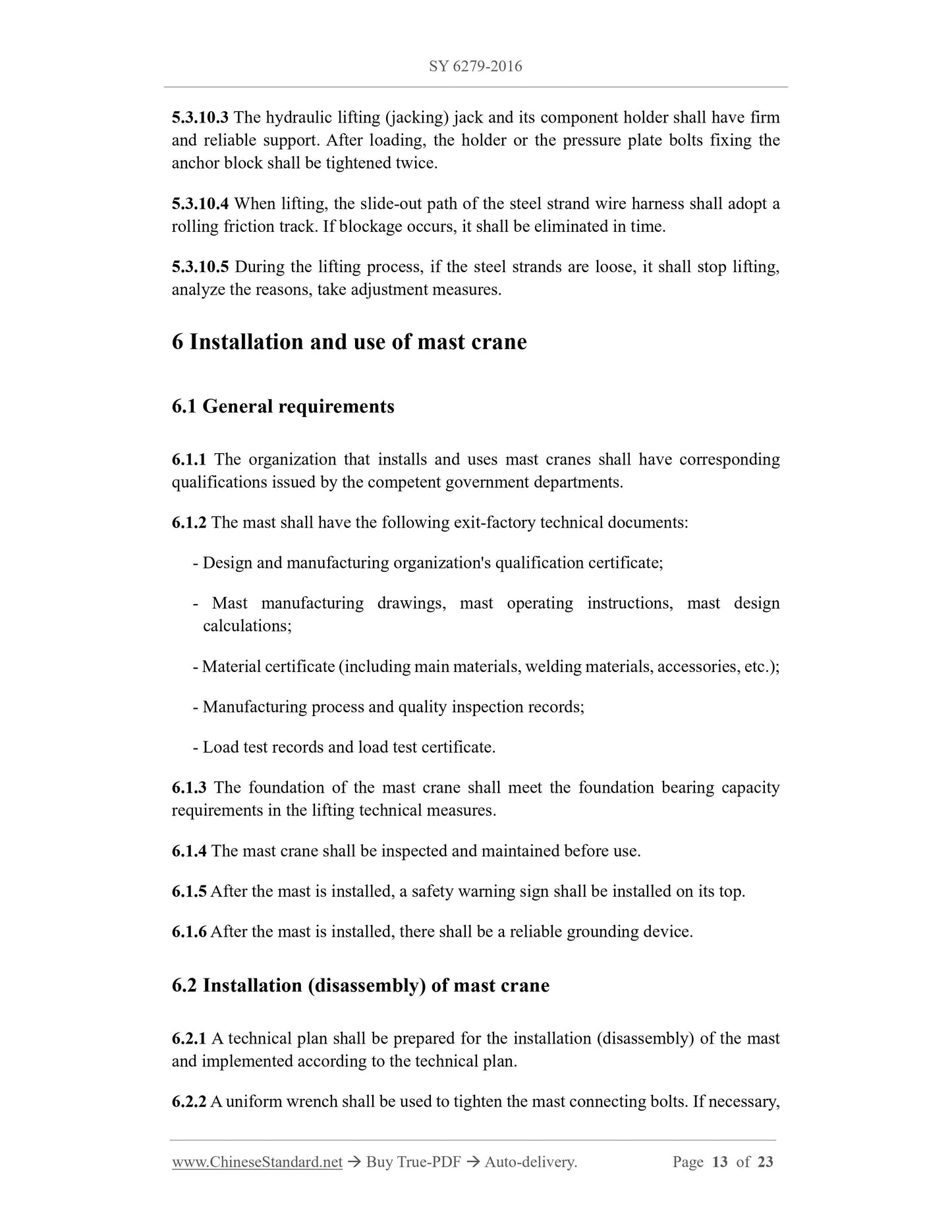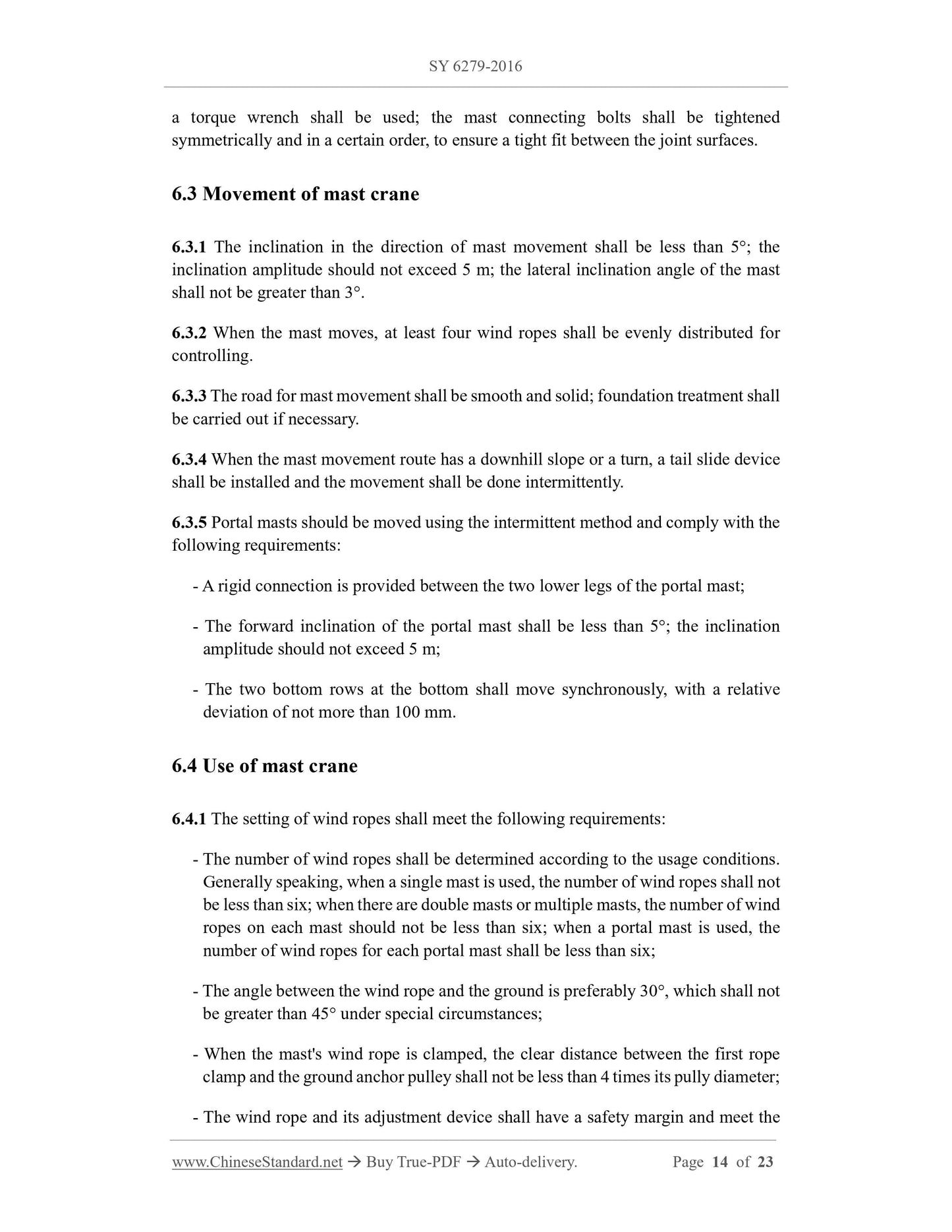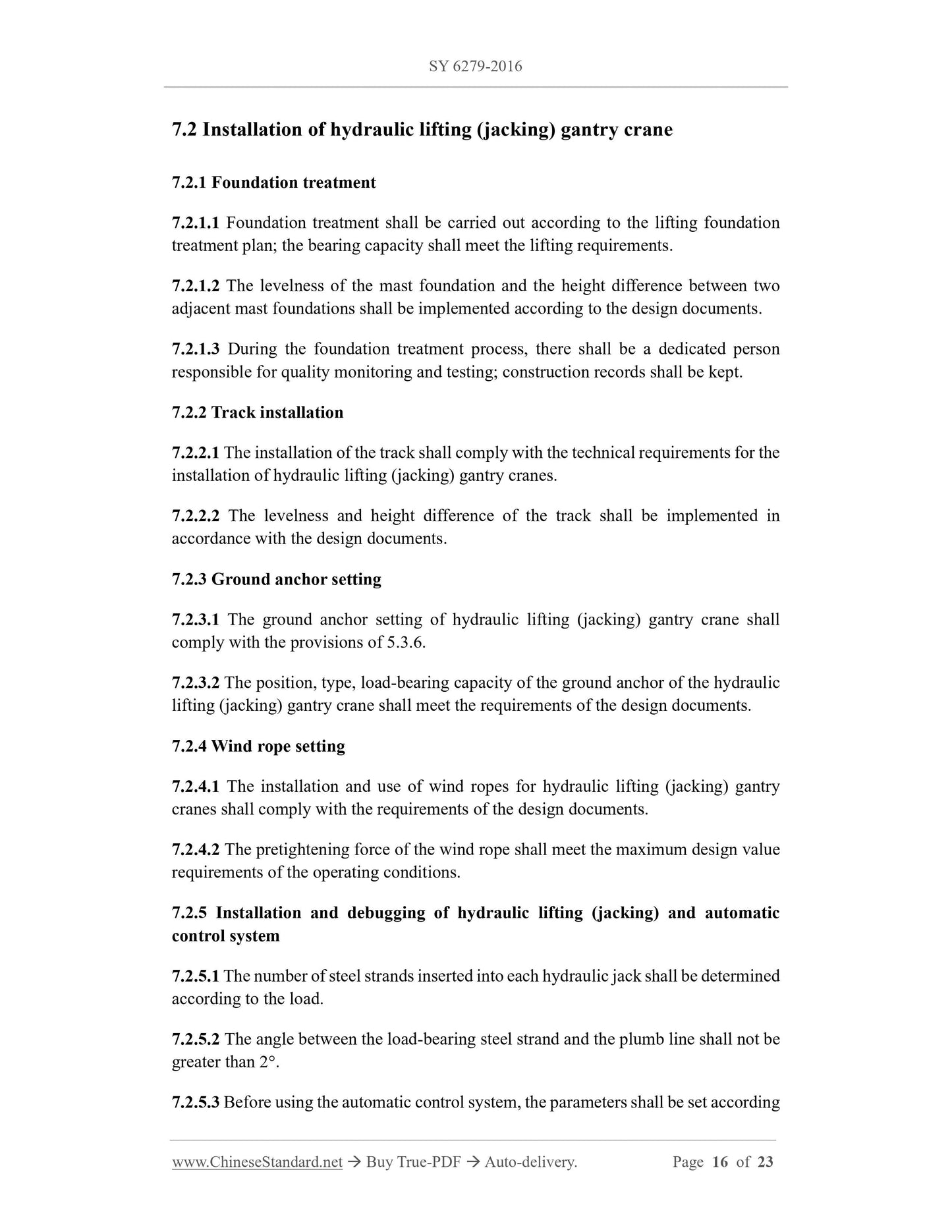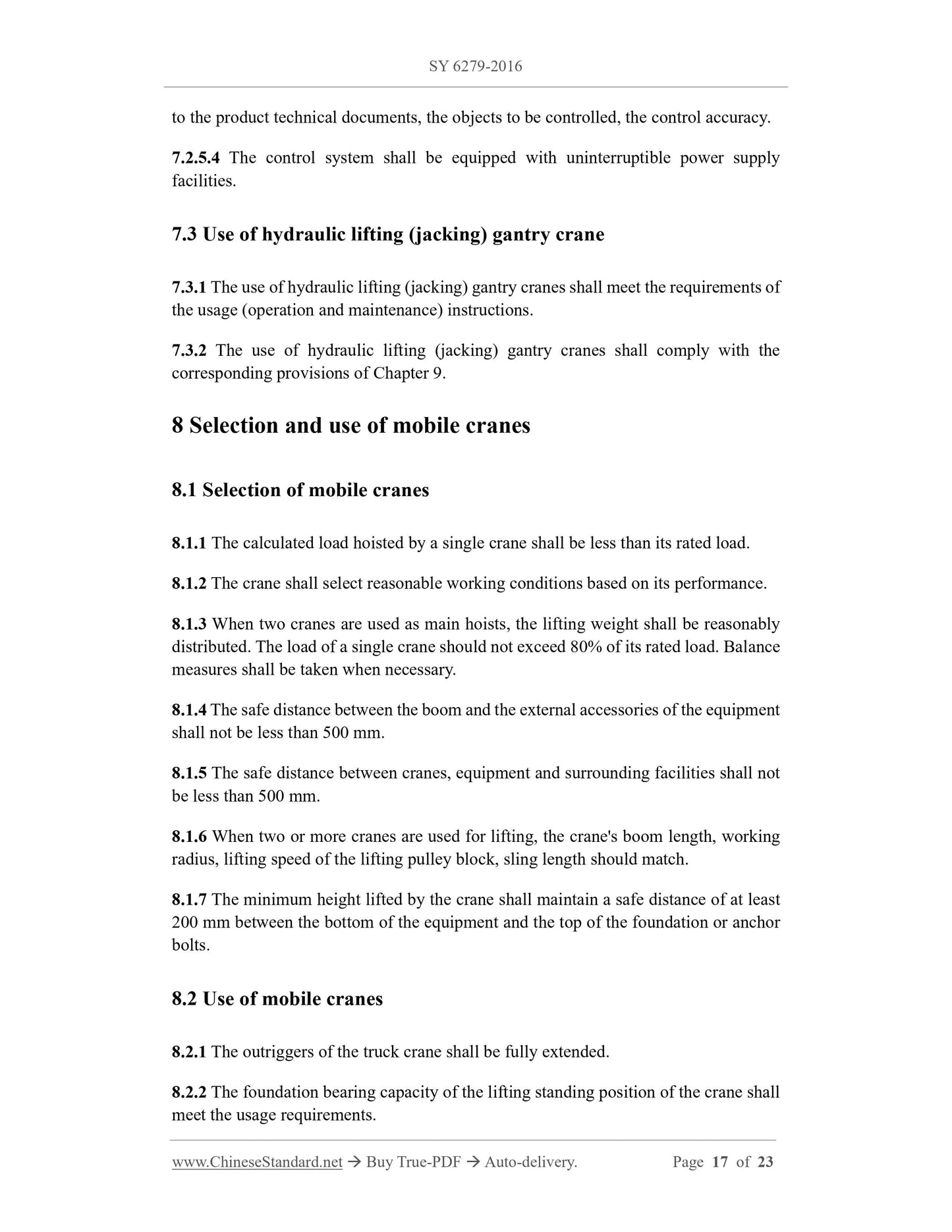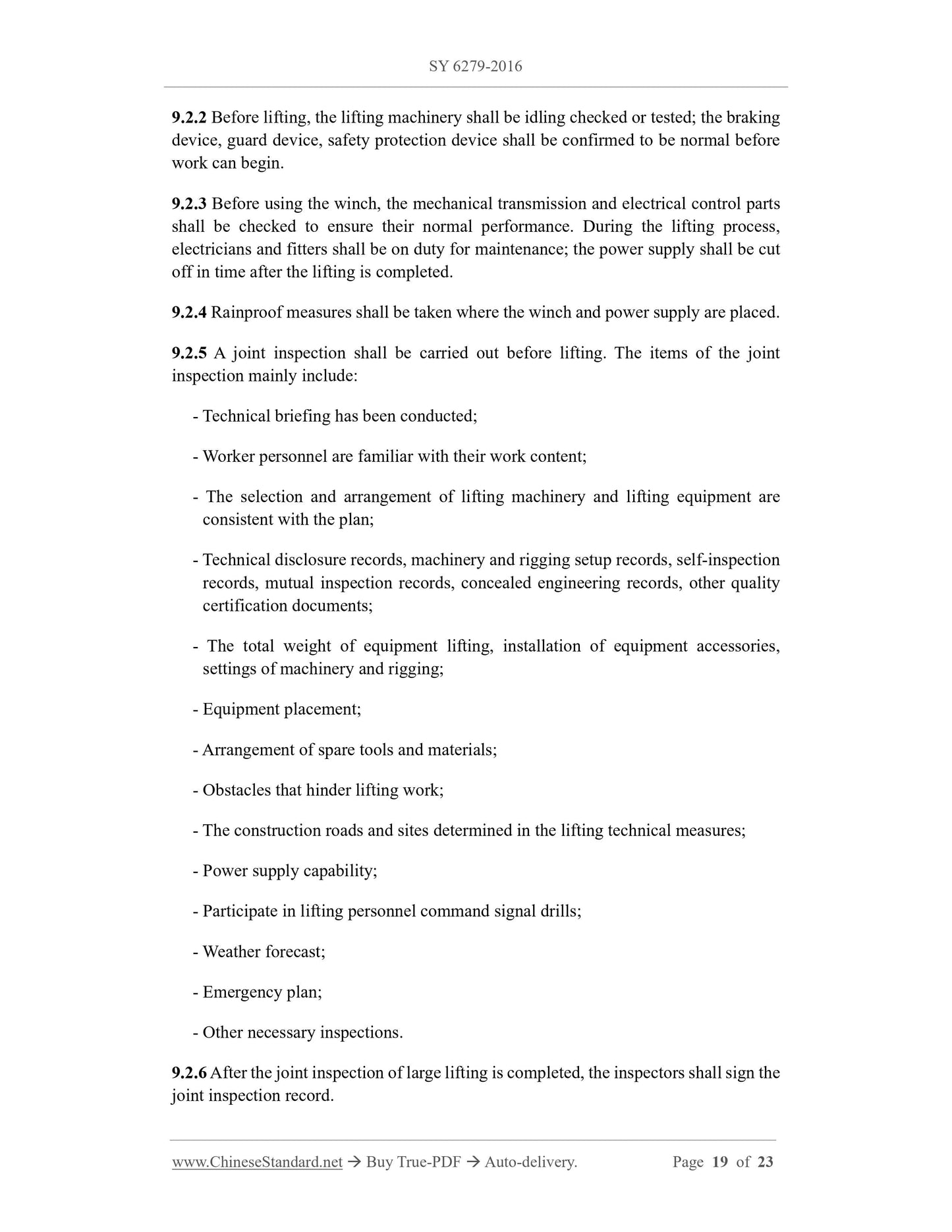1
/
of
12
www.ChineseStandard.us -- Field Test Asia Pte. Ltd.
SY 6279-2016 English PDF
SY 6279-2016 English PDF
Regular price
$310.00
Regular price
Sale price
$310.00
Unit price
/
per
Shipping calculated at checkout.
Couldn't load pickup availability
SY 6279-2016: Safety code for lifting large equipment
Delivery: 9 seconds. Download (and Email) true-PDF + Invoice.Get Quotation: Click SY 6279-2016 (Self-service in 1-minute)
Newer / historical versions: SY 6279-2016
Preview True-PDF
Scope
This standard specifies the lifting organization and lifting preparation of largeequipment, the installation and use of mast cranes, the installation and use of hydraulic
lifting (jacking) gantry cranes, the use of mobile cranes (crawler cranes, tire cranes,
truck cranes), the lifting process control, the emergency management and other basic
requirements for safe production.
This standard applies to the lifting of large equipment in newly built, renovated
(expanded), overhauled oil field ground projects, onshore petroleum and chemical
engineering projects.
Basic Data
| Standard ID | SY 6279-2016 (SY6279-2016) |
| Description (Translated English) | Safety code for lifting large equipment |
| Sector / Industry | Oil and Gas Industry Standard |
| Classification of Chinese Standard | E09 |
| Classification of International Standard | 13.100 |
| Word Count Estimation | 14,112 |
| Date of Issue | 2016-01-07 |
| Date of Implementation | 2016-06-01 |
| Older Standard (superseded by this standard) | SY 6279-2008 |
| Quoted Standard | GB 5082; GB/T 5972; GB 6067.1; GB 50798-2012; NB/T 47013.1; NB/T 47013.2; NB/T 47013.3; NB/T 47013.4; NB/T 47013.5; NB/T 47013.6; NB/T 47013.7; NB/T 47013.8; NB/T 47013.9; NB/T 47013.10; NB/T 47013.11; NB/T 47013.12; NB/T 47013.13 |
| Regulation (derived from) | National Energy Board Announcement No. 1 2016; Industry Standard Record Announcement No. 2016 2016 (No. 196) |
| Issuing agency(ies) | National Development and Reform Commission |
| Summary | This standard specifies the hoisting organization, hoisting preparation, installation and use of mast cranes, installation and use of hydraulic lifting (overhead) gantry cranes, use of mobile cranes (crawler cranes, tire cranes and truck cranes), Hoisting process control, emergency management and other basic requirements of production safety. This standard applies to new construction, renovation (expansion) construction and overhaul of the oilfield surface engineering, onshore petroleum and chemical engineering of large equipment hoisting. |
Share
